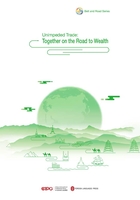
1. New features and new trends of international trade
Since the financial crisis in 2008, global trade growth has been declining year by year, and the growth of major economies has gradually slowed down too, bringing a new normal to global trade. According to statistics from the IMF (International Monetary Fund) and the World Bank, with 2016 just ending, the world registered trade growth of less than 3% for the fifth consecutive year, and the imports and exports of the world’s 31 major economies declined in the first quarter of 2016. Economic growth will be less than 5% in the medium to long term. According to the World Bank, the average annual growth rate of the global economy was 4.8% in the years from 2003 to 2008, compared with an average annual growth rate of only 3.5% from 2011 to 2015. According to the IMF forecast, the world average annual growth rate in 2016-2020 will be 3.6%-4%. In this context, the developed countries are returning to the real economy, that is, re-industrialization. Developed countries have set off a new wave of global “re-industrialization, ” returning to manufacturing, and emphasizing both high-end manufacturing and high-end services. Developing countries such as China have entered the period of economic transition from domination of low-end industries to that of medium- and high-end industries, as the global industrial structure has entered a new round of adjustment. The economic model oriented toward high-tech industries and high-end services has become a new growth point, which is a new feature of today’s global trade.

Figure 1: Trade Growth in 2016 (Goods and Services) Is the Lowest Since the Crisis
Source: International Monetary Fund World Economic Outlook, Jannary 2017.
Note: Trade refers to exports and imports of goods and services.

Figure 2: Contributions to Growth in Merchandise Trade Volume
Source: CPB Netherlands Bureau of Economic Policy Analysis.
Note: Based on seasonally adjusted data.
From an international perspective, the international economic and trade structure is undergoing a readjustment. From China’s domestic perspective, the long-term trend of our improving economic fundamentals has not changed, our prospects of development are still broad, but the requirements are more urgent for improving the efficiency of our growth, and for economic transformation and upgrading. As China’s economic development enters the new normal of slowdown in growth, structural adjustment and a shift in momentum, our economic structure and our growth drivers are undergoing fundamental changes. To understand unimpeded trade of the B&R Initiative, it is of realistic importance for us to recognize the current situation of international trade as a guiding principle.